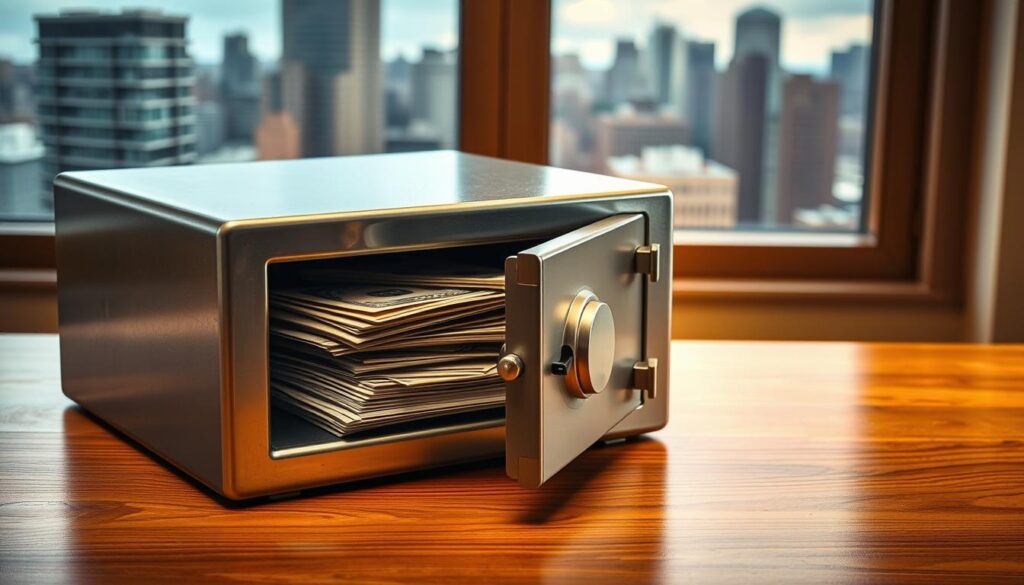Are you ready for life’s unexpected surprises? Like a sudden job loss or a big car repair? A financial safety net can be a big help during tough times.
An emergency fund is a stash of money for unexpected bills. It helps you stay financially stable and reduces stress. This fund is key to handling life’s surprises without financial strain.
Having a financial cushion means you won’t have to go into debt. It lets you cover important expenses. In this article, we’ll talk about why an emergency fund is crucial and how to start one.
For more tips on managing your money and securing your financial future, check out www.fortydeal.com or email [email protected].
Key Takeaways
- Understand the importance of having an emergency fund
- Learn how to build a financial safety net
- Discover how to maintain financial stability during uncertain times
- Explore strategies for avoiding debt
- Find out how to ensure financial security
What Is an Emergency Fund and Why You Need One
Having a financial cushion is smart for your money health. An emergency fund is key to a solid financial plan. It acts as a financial safety net against sudden costs and money troubles.
Definition and Purpose
An emergency fund is money saved for unexpected bills, like car fixes or medical costs. Its main goal is to keep you liquid during tough money times. This way, you can avoid debt when surprises hit, helping you saving for emergencies.

Financial Security Benefits
Emergency funds offer many benefits. They ease financial stress by providing a safety cushion. They also give you freedom to make choices without money worries.
For example, an emergency fund might let you take a new job or get through unemployment without financial strain. Following emergency fund tips can help you build this financial security.
By focusing on an emergency fund, you can secure a more stable financial future. This prepares you to face life’s surprises better.
The True Cost of Financial Unpreparedness
Not having an emergency savings account can lead to debt and financial trouble. In the United States, millions face this issue.
Statistics on Americans Without Savings
Many people don’t have enough savings for unexpected costs. Recent data shows that a large part of the population is not ready for financial emergencies.
| Category | Percentage |
|---|---|
| Americans without savings | 42% |
| Americans with less than 3 months of savings | 57% |
Consequences of Having No Safety Net
Without a rainy day fund, you face serious money problems. This includes getting into debt and seeing your credit score drop. When emergencies hit, you might have to borrow at high rates or sell things for less than they’re worth.

Knowing these facts shows why having an emergency savings account is key. It helps keep your finances safe.
How Much Should You Save in Your Emergency Fund?
Finding the right amount for your emergency fund is key to financial safety. The amount you need depends on your income, monthly bills, and any debt you have.
Think about your basic needs like rent, utilities, and food. Also, consider any high-interest debt you’re paying off. An emergency fund calculator can guide you to the right savings amount for your situation.
Remember, your emergency fund should be liquid, low-risk, and easy to access. Aim to save enough to cover three to six months of living costs. By understanding these points and using the right tools, you can build a strong financial safety net.

